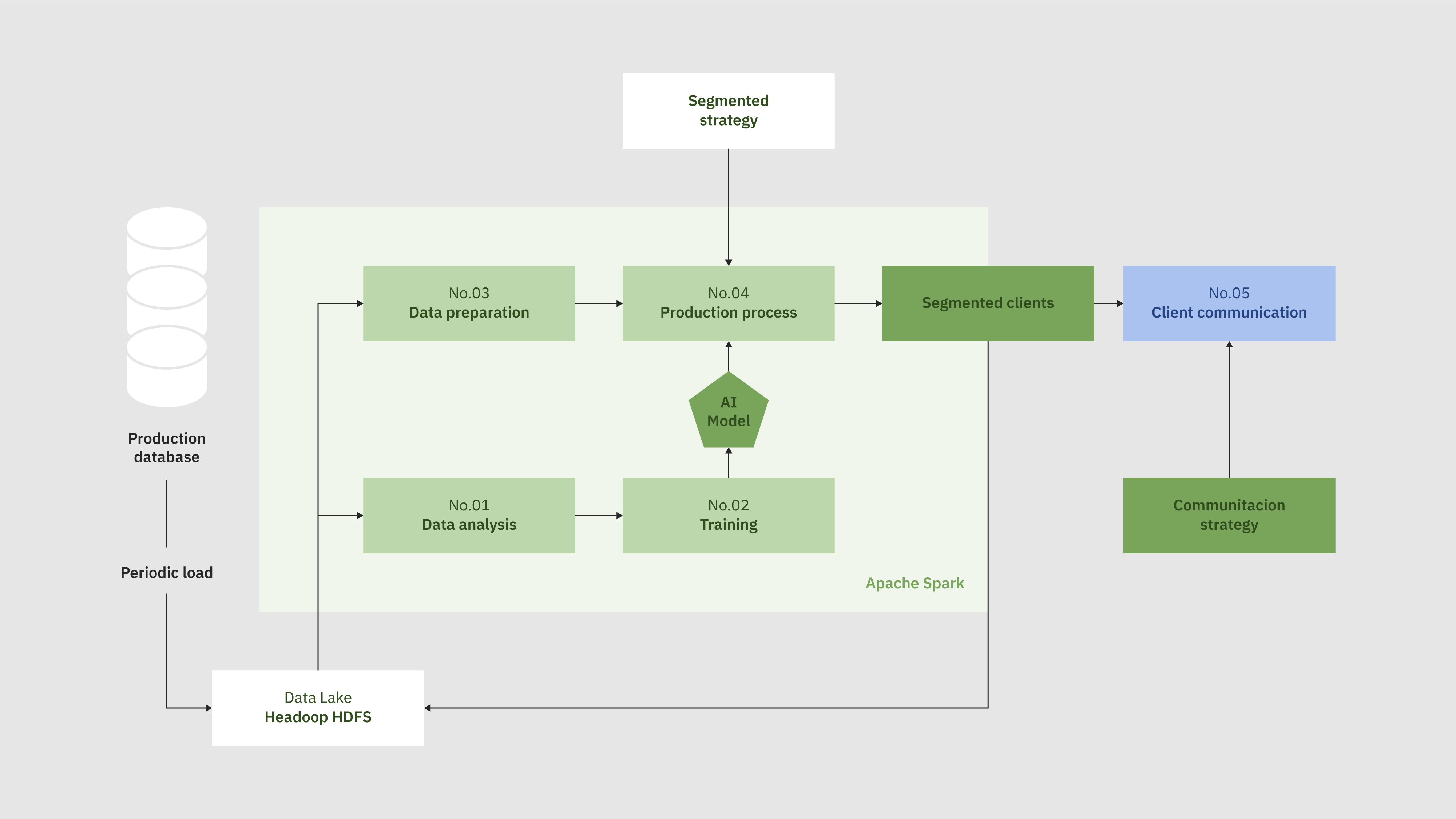We optimize recovery management with Artificial Intelligence
Implications: Data Science & Engineering, Machine Learning, Marketing, Banca
Implications: Data Science & Engineering, Machine Learning, Marketing, Banca

Non-performance is one of the main risks affecting the financial sector, leading to large losses and even bankruptcy for some companies.
The challenge of this project was to build an optimal recovery management strategy for a credit institution. To do so, we combined artificial intelligence techniques and personalized communication mechanisms.
We created a series of anticipation models with artificial intelligence techniques, which served to predict whether or not a receipt would enter the recovery chain.
We used these models to classify the entity's customers according to their probability of non-payment. This classification allowed us to segment communication strategically, adapting messages to each situation.
In this way we were able to reduce the impact of default on the institution and improve its relationship with customers.

Artificial intelligence helped us understand why some clients went into default, and to avoid it.
First we identified the business parameters that could be indicators of unpaid potential, as well as their metrics in the client's data lake.
Once the process of understanding and ETL of the relevant information was completed, we built a series of supervised models using descriptive statistical analysis techniques and automatic learning algorithms:
· Univariate analysis
· Multivariate analysis
· Dimensionality reduction
· Regression techniques (logistics, random forest, gradient boosting, artificial neuron networks).
These models assigned a probability of non-payment and return of the first receipt to each customer, allowing us to identify different profiles that would be very useful to customize the communication.
If artificial intelligence gave us the necessary data and insights, communication allowed us to use them to generate a real impact.
We developed communication campaigns segmented by client profile, optimizing the available resources (contact center, emails, sms) and offering payment facilities and alternatives in many cases. For example, with customers with high probability of default that meet the conditions of refinancing a loan or with a high card fee that can be reduced.
· We reduced the total number of clients in the recovery phase by more than 5%, a scenario 6 times more efficient than before the project.
· We helped reduce the bank's provisioning capital (a European requirement to guarantee liquidity) by 2 million euros after 5 months.
· We optimized up to 35% of the resources that the entity dedicated to the management of delinquency.
· We managed to reduce the probability of a client's default by between 20% and 62%, depending on the type of client.
· We improved our client's EBITDA (Earnings Before Interest, Taxes, Depreciation, and Amortization), LTV (Lifetime value) and NPS (Net Promoter Score).